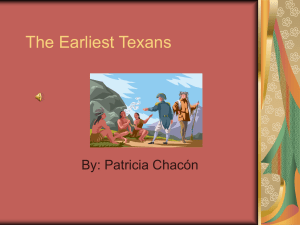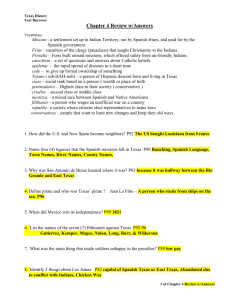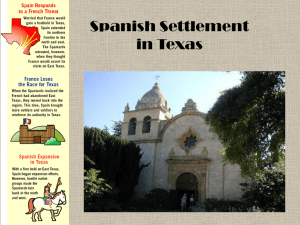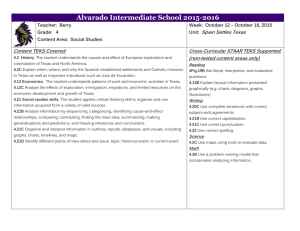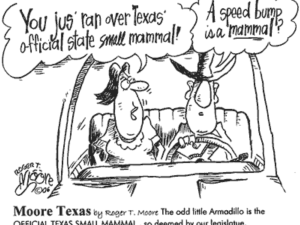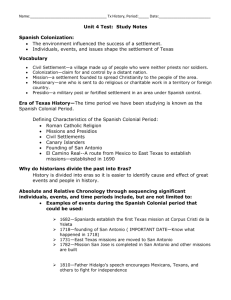Unit 4 - Section 2 Life in Spanish Texas
advertisement
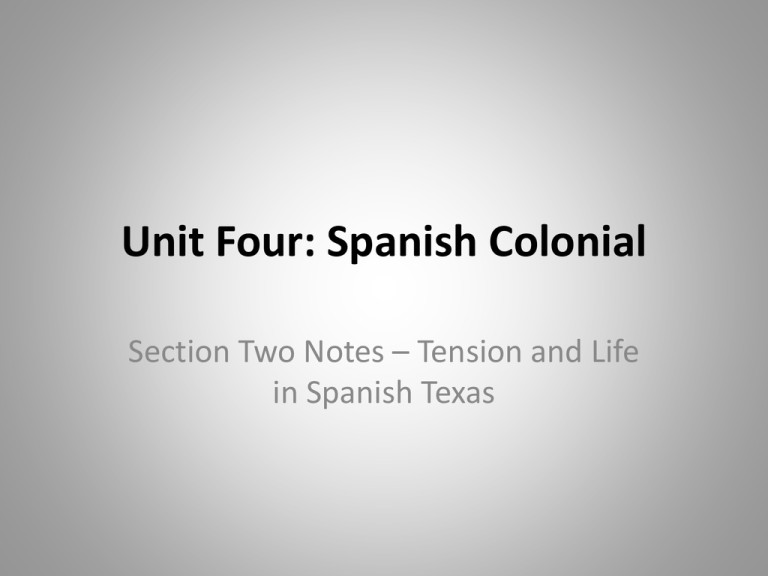
Unit Four: Spanish Colonial Section Two Notes – Tension and Life in Spanish Texas War Between France and Spain After years of tension, France and Spain finally went to war in 1719 in Europe. This affected Texas. The Chicken War The Chicken War • Cause - French soldiers began attacking Spanish missions in Texas as a result of the war going on in Europe between France and Spain. One incident at the Spanish mission San Miguel de Linares de los Adaes later labeled the fight The Chicken War. • Effect - Because the French were attacking missions, all the missions in East Texas were abandoned. Aguayo Expedition Marqués de San Miguel de Aguayo was the governor of Coahuila, a state of New Spain. He was ordered by the viceroy of New Spain to reoccupy the missions in East Texas. They wanted to keep the French out of Texas after the war ended. The area, later named Los Adaes, became the first official capital of Spanish Texas. Clashes on the Frontier Not just the French threatened Spain’s hold on Texas. The Comanche and the Apache fiercely resisted the Spanish threat to their land and life. Often missions were raided and the settlers were killed or run off. Together these groups kept Spain from controlling anything but small areas of Texas. Life in the Missions Both Spanish missionaries and Native Americans lived at the missions. It was a life of work and worship. The people often struggled for food and went hungry. Some missions were more successful than others, such as in San Antonio. The Indians there adopted the Spanish culture, and that made them more successful. Life at the Presidio Missions were more likely to succeed if there was a predido near by. Soldiers lived at the presidios. They worked daily guarding the missions and supervising the Native Americans as they worked. Some brought their families to live with them. The problem was that at many of the presidios, they were responsible for protecting more than one mission. The forces were spread thin, and they could not always protect the missions from Native American attacks. Life at the Civil Settlements • Civil settlements had a diverse population, with Spaniards, American Indians, and African Americans. • The largest settlement that grew from a mission was San Antonio. • The ayuntamiento was the two council, and they enforced royal and local laws. • The alcalde served as the mayor, sheriff, and judge of for the town. • The economy of the settlements was based on farming and ranching. Life in the Ranchos Some settlers lived on ranchos, or ranches. Some ranchos belonged to the missions nearby, while others were owned by wealth land owners. These land owners were considered the nobility of New Spain. Vaqueros, or Spanish cowboys, lived and worked at the ranchos. They were the model for what we would now consider a cowboy. They were often expert horsemen, and they created the very first rodeos with Spanish horses and mustangs. Settlers Adapted In order to live in Texas, Spanish settlers had to adapt to and modify the environment that they lived in. • They built homes and home furnishings from timber and rocks. • They also built dog run homes, which were built with a breezeway for shade and to catch the breeze. • They made clothes from deer hides and other animals. • They dug water wells so they could have access to water near their homes. • They killed animals and grew crops for food. Spanish Influences on Texas • The Spanish helped lay out the first roads in Texas, such as El Camino Real. • Many names for places and natural features in Texas are Spanish: Amarillo, Rio Grande, and other Texas cities and landforms. • Texas is still affected Spanish influence today through ranching, farming, architecture, art, food, language, and music. • Religion – Roman Catholic Spanish Influence Examples


